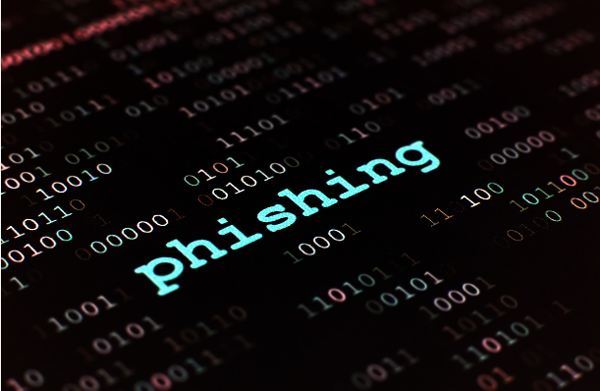Across the sprawling domain of the digital world, our reliance on technology has opened the door to both convenience and vulnerability. As we seamlessly traverse the internet, the lurking threats of computer viruses and phishing scams pose a constant challenge to our online security. In this article, we delve into the intricacies of these cyber threats, exploring what they are, how they operate, and most importantly, how you can safeguard yourself against them.

Understanding Computer Viruses:
A computer virus is a malicious software program designed to replicate itself and spread to other computers. Much like a biological virus, a computer virus infects a host system, causing harm to files, applications, and even the operating system. These digital pests often disguise themselves as legitimate programs or files, tricking users into unknowingly executing them.
Common types of computer viruses include:
- Trojan Horses: These viruses masquerade as harmless software but contain malicious code. Once activated, they can open a backdoor for hackers, leading to unauthorized access to your system.
- Worms: Worms are self-replicating viruses that can spread across networks without user intervention. They exploit vulnerabilities to infect multiple devices rapidly.
- Ransomware: This type of virus encrypts files on a victim’s computer, rendering them inaccessible. The attacker then demands a ransom for the decryption key.
Protecting Against Computer Viruses:
- Install Antivirus Software: A robust antivirus program acts as a shield against viruses. Regularly update it to ensure protection against the latest threats.
- Keep Software Updated: Regularly updating your operating system and applications patches vulnerabilities, reducing the risk of infection.
- Exercise Caution: Avoid downloading files or clicking on links from unknown or suspicious sources. Be wary of email attachments, as they are common carriers of viruses.
Understanding Phishing Scams:
Phishing is a deceitful practice wherein cybercriminals attempt to trick individuals into divulging sensitive information, such as passwords and credit card details. These scams often involve fraudulent emails, messages, or websites that mimic legitimate entities.
Common phishing tactics include:
- Email Phishing: Cybercriminals send emails posing as trusted organizations, urging recipients to click on malicious links or provide sensitive information.
- Spear Phishing: Targeted phishing attacks where the attacker tailors the message to a specific individual or organization, often using information gathered from social media.
- Vishing (Voice Phishing): Phishing conducted over the phone, where scammers impersonate legitimate entities to extract sensitive information.
Protecting Against Phishing Scams:
- Verify Sender Authenticity: Before clicking on links or providing information, verify the legitimacy of the sender. Check for spelling errors or unusual email addresses.
- Use Multi-Factor Authentication (MFA): Enable MFA for an extra layer of security, even if your login credentials are compromised.
- Educate Yourself: Stay informed about common phishing tactics and regularly update yourself on emerging threats.
Staying Ahead in the Digital Arms Race:
As technology advances, so do the strategies employed by cybercriminals. To stay ahead in this digital arms race, it’s crucial to foster a cybersecurity mindset. Here are additional strategies to fortify your defenses against computer viruses and phishing scams:
1. Regular Backups:
Frequent backups of your important data act as a safety net. In the event of a ransomware attack or data loss due to a virus, you can restore your files from a secure backup. Use external drives or cloud services to keep copies of your critical information.
2. Secure Your Wi-Fi Network:
A strong and well-encrypted Wi-Fi network is the first line of defense against unauthorized access. Use WPA3 encryption, change default router login credentials, and regularly update your Wi-Fi password to prevent unauthorized access.
3. Stay Informed About Latest Threats:
Cyber threats are ever-evolving, and staying informed about the latest tactics is essential. Follow reputable cybersecurity blogs, subscribe to newsletters, and participate in forums to exchange insights with the online community. Awareness is a powerful tool against emerging threats.
4. Employee Training Programs:
In an organizational setting, conducting regular cybersecurity training programs for employees is paramount. Equip them with the knowledge to identify phishing attempts, recognize suspicious links, and report any unusual activities promptly. A well-informed workforce is a resilient one.
5. Use a Firewall:
Firewalls act as a barrier between your computer and the internet, monitoring and controlling incoming and outgoing network traffic. Enable your device’s built-in firewall and consider using a hardware firewall for an added layer of protection.
6. Implement Email Filtering:
Robust email filtering solutions can identify and block phishing emails before they reach your inbox. These filters analyze email content, attachments, and sender behavior to detect malicious intent, reducing the likelihood of falling victim to phishing scams.
7. Regular Security Audits:
Conducting periodic security audits helps identify and rectify potential vulnerabilities in your system. This includes reviewing user access permissions, updating security policies, and performing penetration testing to assess the robustness of your defenses.
8. Report Incidents Promptly:
In the unfortunate event of a security breach, swift action is crucial. Report incidents to your IT department, relevant authorities, or use cybersecurity reporting platforms. The faster the response, the better the chances of mitigating potential damages.


Leave a Reply